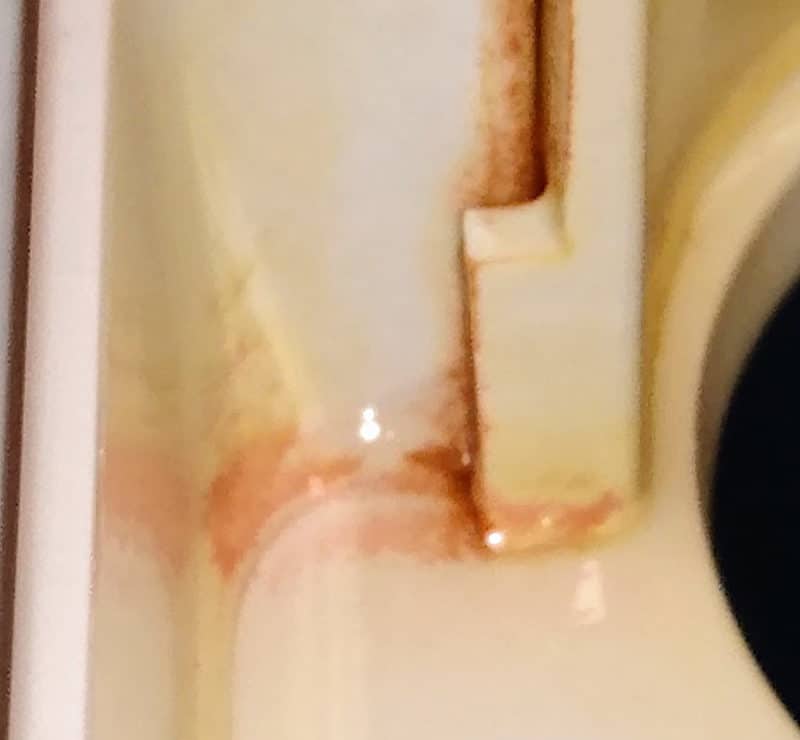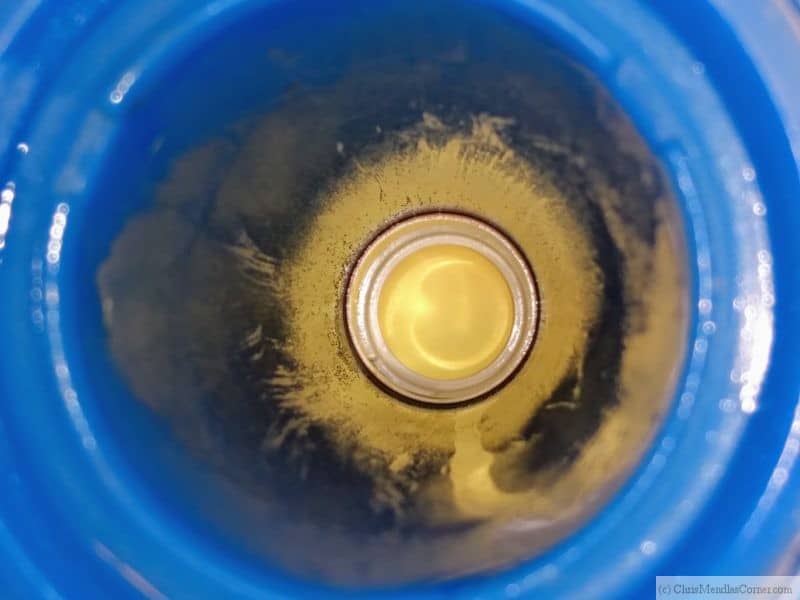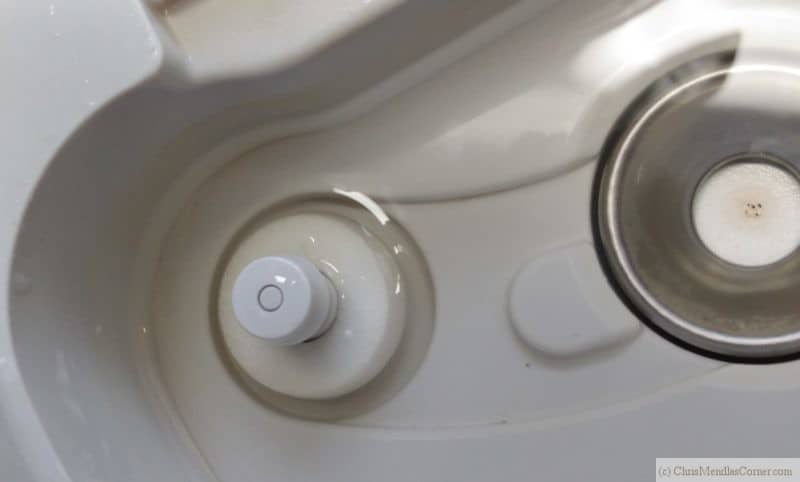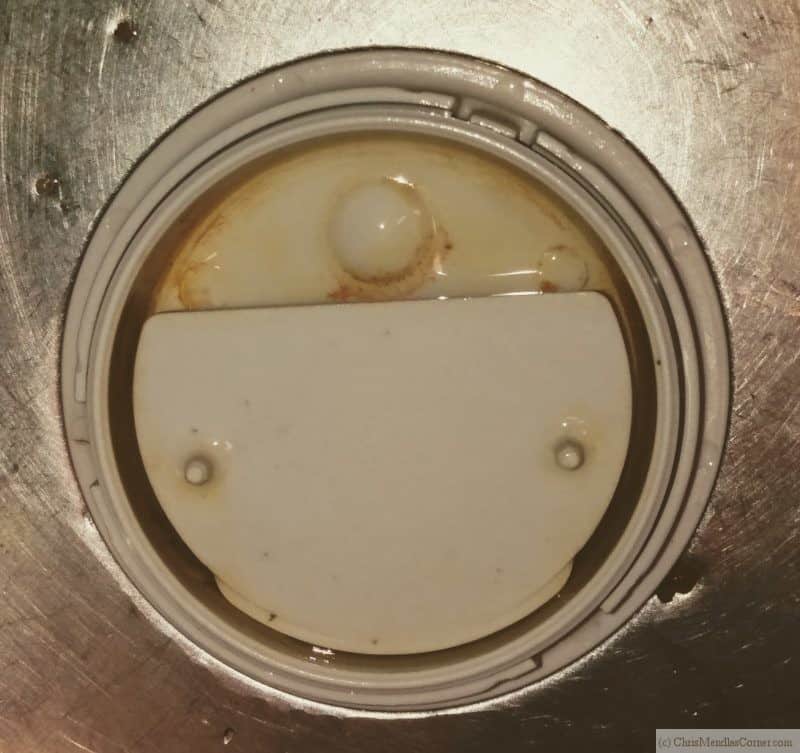Last Updated on 8 months by Christopher G Mendla
The answer to the question “is my room humidifier making me sick?” could very well be a resounding “Yes”. During the winter many homes need additional humidity, especially homes with forced air heat. Ultrasonic and steam humidifiers are a popular way to increase humidity. However, even with careful cleaning, they can harbor algae, slime and bacteria.
Overview – Using ultrasonic humidifiers to increase humidity
For the last couple of years, I was using ultrasonic room humidifiers to try to keep the humidity at a decent level during the winter months. I finally got far enough down the chore list to replace the spray humidifier on my furnace. That provided enough humidity that I could clean and mothball my ultrasonic humidifiers. I also used a home humidifier hack consisting of a wet towel and fan. That actually worked well.
According to the Mayo Clinic, proper humidity will ease breathing and skin problems.
Below is an example of an ultrasonic humidifier. I have two of this size (about one gallon) and a larger unit that holds about 2 gallons.
The units worked fairly well although they didn’t get the average humidity above about 35 percent. The spray unit on the house gets the humidity about 15 percent higher. Note – I do not run the unit on a vintage wood table. I just put it there to photograph it.
WARNING – read the instructions and warranty for your units as improper cleaning could void the warranty or cause other issues. This is just an example of how I cleaned my humidifiers.
Downsides to room humdifiers
The first downside is the need to constantly refill the units. I generally had to refill all three units about 3 times every two days. With the ‘eco friendly’ slow drip faucets, that became time consuming.
They also need to be cleaned regularly. I found that my units had to be thoroughly cleaned at least once a week. Twice a week would be better.
Scum would build up in the reservoir and in the tube inside the tank as well as the bottom of the tank. This brand used a silver impregnated tank that did a good job of keeping the water in the tank clean. Ideally, a thorough cleaning once a day would be best but is impractical for most people.
However, there was always a ‘soap scum’ waterline and also a pink stain. The pink stain is an airborne bacteria which appears to be Serratia marcescens. According to the Wiki article linked, it could be nasty.
Cleaning the units every day was simply not manageable as it takes about 15 minutes or so to properly clean each one. I opted to clean once a week.
While this post details cleaning an ultrasonic humidifier the same concepts apply to evaporative and steam humidifiers.
Cleaning a room humdifier
The cleaning procedure was pretty simple:
- Empty all the water
- Spray all surfaces with straight vinegar. SEE THE WARNING ABOVE ABOUT WARRANTIES. I’d let the vinegar sit for a bit and then respray. Be sure to get all of the crevices.
- Use the provided brush to clean the ultrasonic button. Then use Q Tips wet with vinegar to clean into the crevices.
- Wipe down as much as possible with a vinegar soaked paper towel.
- Soak some parts such as the nozzle in bleach.
- A steam cleaner can help kill any algae or bacteria but you risk damaging the unit.
Cleaning difficulties
Cleaning is a bit difficult in that the humidifiers have a lot of crevices. Getting inside the tube to clean is difficult unless you have a bottle brush set aside for that purpose.
You need to be careful with using something like Clorox as it could have an adverse affect on the ultrasonic button.
Close ups of the algae and bacteria.
I wanted to do a thorough cleaning before setting the units aside. Hopefully, I won’t need them but if I do, they will be clean.
Below is the water tray. To the left is a float valve and to the right is the ultrasonic button. I only used the nylon brush that was provide with the unit to clean the button. For the float valve, I would lift it and try to get under it with a Q Tip.
If you look closely, you can see the “Bathtub Ring”on the walls.
Below is a shot of the inside of the tube. This is the tube that runs through the water reservoir and delivers the mist. It wasn’t quite as bad as it looks here. Shooting inside the tube was tricky. However, there was a noticable sheen of algae in the tube. This required a couple of runs with a bottle brush and vinegar to remove.
The image below is zoomed in on the white plastic that is joined to the blue water container. The joint is difficult, if not impossible, to clean. Carefully spraying bleach will get most of the crud and algae.
The image below indicates a fundamental failure of the units. The pink residue is airborne bacteria. The design has crevices that are nearly impossible to clean. Using bleach or other cleaners could damage the ultrasonic button.

Shown below is the nozzle that fits on the top of the tube. Algae and bacteria grow inside the nozzle. In this case, the parts can be separated so that you can clean the inside. However, many people might not think to do that.
Conclusion and alternatives to room humidifiers.
If you are purchasing a unit, take a close look to see how easy it will be to clean. Check the owner’s manual online to see if you can use bleach to clean the unit.
Consider installing a whole house furnace humidifier if possible. If you have radiators, this will not be an option.
The hack referenced at the beginning of this article is a good temporary solution.
If you do use a room humidifier, set a strict schedule for cleaning and be sure to get into every nook and crevice.
A similar problem is when room air conditioner filters are dirty.






looks like the two I just bought from costco.
I’ve been using my humidifier for maybe 2-3 weeks, started feeling under the weather with a dry cough, almost like somethings in my chest. No fever. Paranoid about Covid because that’s obviously around but I have pretty low exposure to it. I went to clean my humidifier tonight and realized the water had some floaty stuff in it, and I poured water into an area that I wasn’t supposed to and had been running it that way for days. I also noticed faint pink rings around the spouts where the mist comes out. I do have that orange pink mildew in my bathroom tub next to the area so I suppose that bacteria you mentioned is already in the area. I’m freaking that I made myself sick. I hope I get better now that I’m not going to use it. I also have a 2 year old who sleeps in my room. Any advice?
Good evening. I can see your concern about the situation you described. From what I know the pinkish and orange substance you found in your house is likely caused by algae and S. marcescens. It is very unlikely to cause harm to your health unless you are immunosuppressant. The best ways to avoid the growth is to clean affected areas with bleach every week to prevent growth. Also clean the humidifier weekly with bleach and use distilled water instead of tap. Tap water is ok, it just requires cleaning the humidifier more often. The best humidifiers are wick type but they cost quite a bit to maintain and require the wicks to be replaced. It seems very likely that the bacteria that has grown in your humidifier has spread due to the contaminated air, but this can be addressed by making sure the humidity in your house does not pass 70. Venting the house well should be enough to remove excess moisture. The best humidity to have in a household is around 30-50. I recommend cleaning the unit very well with bleach weekly, making sure the humidity in your house doesn’t pass 50, and clean the areas that contain damp environments in your house like the bathroom. Depending where you live you might need a Dehumidifier if you live in humid environments. The humidifier can prevent you from getting sick if used correctly in a clean mold free environment. If your house grows black mold, address that first. Have a good air filter and humidity sensor and you can have the best air in your house and be healthier. Just don’t use an ionizer if it has one. Ionizers cause more harm than good. I live in the desert and the humidity is very low under 20 percent. We can get sick easier without a humidifier because our sinuses and airways get too dry and the protection of mucous is not there. Lastly, If you feel unwell and sick please go to the Doctor! Hope all goes well.